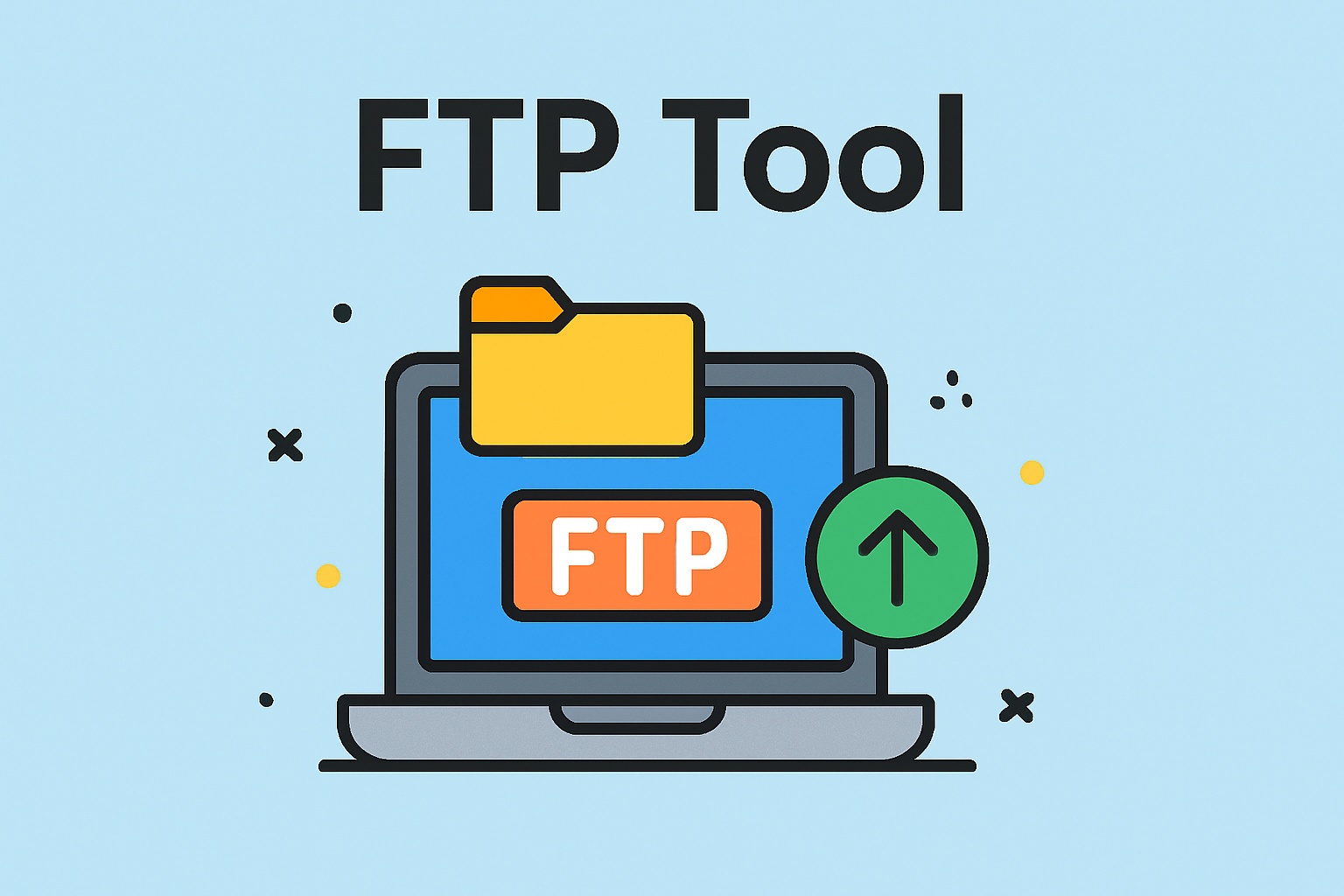Updated on October 15, 2025, by OpenEDR
Transferring files securely between computers and servers is a critical task in IT and cybersecurity. One of the oldest yet most reliable methods is the FTP tool (File Transfer Protocol tool). Despite being decades old, FTP tools remain widely used by IT managers, system administrators, and cybersecurity experts for uploading, downloading, and managing data across networks.
But what makes FTP tools still relevant in 2025? And how can leaders ensure they’re using them securely in an era of cyber threats? Let’s break it down.
What is an FTP Tool?
An FTP tool is software that allows you to connect to a server and transfer files using the File Transfer Protocol. It provides a structured way to move large amounts of data without email limitations or complicated network setups.
FTP tools typically offer:
Command-line interfaces (CLI) for advanced users.
Graphical user interfaces (GUI) for ease of use.
Automation features for scheduled transfers.
Security enhancements, such as FTPS or SFTP (secure protocols).
Why FTP Tools Still Matter in 2025
With the rise of cloud storage solutions and APIs, you might think FTP tools are outdated. But they remain critical for several reasons:
Compatibility: Many legacy systems still depend on FTP.
Large File Transfers: FTP supports massive data movement without timeouts.
Automation: Perfect for recurring data transfers in enterprises.
Cross-Platform Support: Works on Windows, Linux, and macOS environments.
For IT managers, CIOs, and cybersecurity teams, FTP tools provide a reliable backbone for operations.
FTP vs SFTP vs FTPS: Understanding the Difference
When discussing FTP, it’s important to distinguish between variants:
FTP (File Transfer Protocol) – Original protocol, no encryption.
SFTP (SSH File Transfer Protocol) – Uses SSH for secure encrypted transfers.
FTPS (FTP Secure) – Adds SSL/TLS encryption to FTP.
Which one should you use?
Use FTP only in trusted internal networks.
Use SFTP/FTPS when transferring files over the internet or in business-critical environments.
Key Features to Look for in an FTP Tool
When selecting an FTP tool for enterprise use, IT managers and cybersecurity leaders should consider:
Encryption Options – Support for SFTP/FTPS to ensure data security.
User Authentication – Multi-factor authentication (MFA) integration.
Automation & Scheduling – Ability to set recurring uploads/downloads.
Logging & Monitoring – For compliance with regulations like GDPR, HIPAA, or PCI-DSS.
Scalability – Handles growing file sizes and user requests.
Popular FTP Tools in 2025
Here are some of the most widely used FTP tools:
FileZilla – Open-source, user-friendly, supports FTP, SFTP, and FTPS.
WinSCP – Windows-based FTP/SFTP client with scripting support.
Cyberduck – Ideal for macOS and cloud integrations.
SolarWinds Serv-U – Enterprise-grade solution with security monitoring.
Enterprise Managed FTP (MFT) – Corporate solutions designed for compliance.
Benefits of Using an FTP Tool
Implementing the right FTP tool brings several advantages:
Efficient Data Transfer – Move gigabytes of files without interruptions.
Security Compliance – Encrypt files in transit.
Improved Productivity – Automates repetitive transfer tasks.
Cost-Effective – Many free and open-source options exist.
Security Risks with FTP Tools
While useful, FTP tools can also introduce vulnerabilities if not secured properly.
Common Risks Include:
Unencrypted transfers exposing data.
Weak password authentication.
Man-in-the-middle attacks on insecure connections.
Misconfigured permissions leading to data leaks.
Solutions:
Always use SFTP or FTPS instead of plain FTP.
Enforce strong passwords and MFA.
Use firewall security managers to block unauthorized access.
Monitor and log all transfer activities.
Best Practices for Secure FTP Usage
To minimize risks while maximizing efficiency:
Encrypt everything – Both in transit and at rest.
Limit user permissions – Grant only necessary access rights.
Regularly update tools – Patch vulnerabilities promptly.
Integrate with SIEM tools – For advanced monitoring and threat detection.
Audit transfers – Keep logs for compliance and security investigations.
Future of FTP Tools in Enterprise IT
As businesses continue migrating to cloud security solutions and enterprise file-sharing platforms, FTP tools are evolving too. Modern versions now integrate with:
Cloud enterprise security providers.
Automation workflows (DevOps pipelines).
Zero Trust frameworks for better security posture.
FTP tools are no longer just about moving files—they are becoming part of broader cyber resilience strategies.
FAQs on FTP Tools
1. What is an FTP tool used for?
An FTP tool is used to transfer files between a client and a server over the File Transfer Protocol.
2. Is FTP secure?
Traditional FTP is not secure, but secure versions like SFTP and FTPS provide encryption and authentication.
3. What’s the difference between FTP and SFTP?
FTP is unencrypted, while SFTP uses SSH for secure file transfers.
4. Are FTP tools still relevant in 2025?
Yes. Many businesses still use FTP for legacy systems, large file transfers, and automation workflows.
5. How can I secure FTP transfers?
Use SFTP or FTPS, enable MFA, restrict permissions, and monitor transfers with SIEM tools.
Conclusion
So, what is an FTP tool? It’s more than just an old-school file transfer method—it’s a reliable, flexible, and secure way to move data across networks when configured correctly.
For IT managers, cybersecurity professionals, and executives, leveraging secure FTP tools means balancing efficiency with protection. By adopting best practices and integrating advanced security measures, organizations can safely continue using FTP in modern environments.
👉 Ready to strengthen your cybersecurity posture? Get started with Xcitium’s OpenEDR platform for complete enterprise protection against modern threats.
